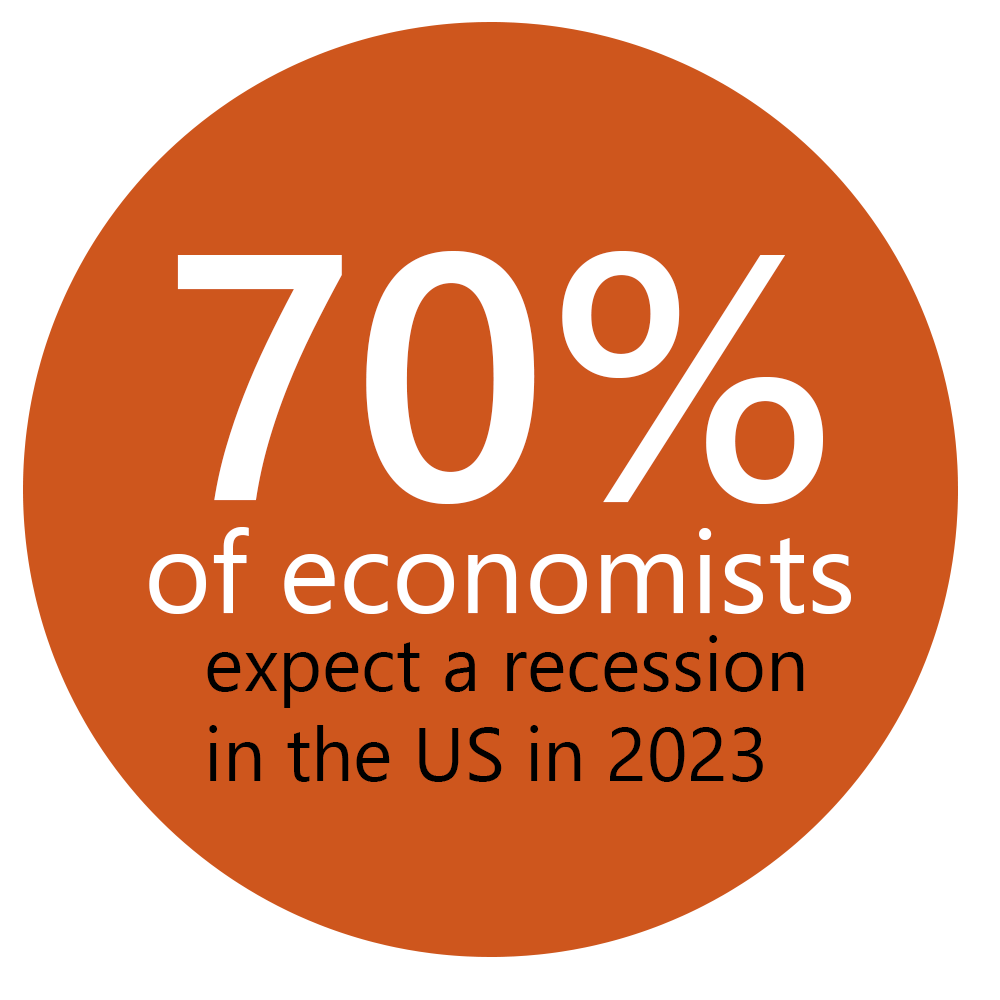This is the second interest rate hike by 0.75 p.p. at once. Earlier, the American regulator also raised the rate in June of this year. The Fed’s Open Market Committee forecasts an increase in the key rate to 3.25-3.50% in 2022 and to 3.50-3.75% next year.
| Period | Fed’s interest rate | Inflation | |
| Change | Value | ||
| March 2022 | + 0.25 p.p. | 0.25-0.50 | 8.5 |
| May 2022 | + 0.50 p.p. | 0.75-1.0 | 8.6 |
| June 2022 | + 0.75 p.p. | 1.5-1.75 | 9.1 |
| July 2022 | + 0.75 p.p. | 2.25-2.50 | N/A |
| 2022 (forecast) | 3.25-3.50 | 5.2 | |
| 2023 (forecast) | 3.50-3.75 | 2.6 | |
| Source: Federal Open Market Committee | |||
In general, the tightening of monetary policy of the world’s largest economy has begun in March this year with an increase in the rate to 0.25-0.50%. Additionally, since June 1, the US Central Bank has begun to reduce the volume of the assets on its balance sheet. In 2022, 3 more meetings of the open market committee will be held, at which the direction of US monetary policy will be determined.
The curtailment of soft monetary policy is taking place against the background of an unprecedented acceleration of inflation in the American economy. According to the latest data, even despite the sharp reversal of the monetary policy of the US Federal Reserve, prices in the country continue to rise steadily. Thus, the consumer price index rose by 9.1% in annual terms in June, which was the greatest acceleration in the last 40 years. In terms of the components of inflation, the cost of fuel jumped by 60% YoY, and food – by 10.4%. The US Federal Reserve expects the country’s inflation rate to average 5.2% in 2022, dropping to 2.6% in 2023 with an average annual target of 2.0%.
The hawkish monetary policy of the US Federal Reserve has a direct impact on other countries: the appreciation of the dollar leads to additional pressure on the national currencies of developing countries and the outflow of capital investments, as well as the investment attractiveness of emerging markets decreases due to the increase in the profitability of risk-free US instruments.
The increase in interest rates of the US Central Bank is also an inevitable deterioration in borrowing conditions for the corporate sector and emerging economies. Servicing the debt burden and opportunities for its further refinancing are becoming unaffordable for corporate and sovereign entities of the world economy. Sri Lanka made the first such sovereign default.
| Rising interest rates increase economic pessimism and uncertainty. Market participants will lay a big premium for investment risk in such conditions. As a result, the required profitability and, accordingly, the discount rates for any investment projects in the United States and the world will increase. |  |
International organizations are reviewing the prospects for the growth of the American economy downwards. Thus, according to the latest OECD estimates in June, the growth rate of the American economy will slow down to 2.3-2.5% in 2022 (5.7% a year earlier). In 2023, US GDP will increase by 1.2%. The International Monetary Fund predicts that the growth rate of US GDP will drop sharply to 2.3% this year and to 1.0% next year in its updated July report. 70% of leading economists surveyed by the Financial Times believe that the American economy will enter a recession next year.
 Рафаэль Жансултанов
Рафаэль Жансултанов
